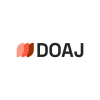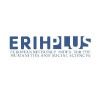Research Article
Aim & Scope
Journal of Penal Law and Criminology (Ceza Hukuku ve Kriminoloji Dergisi) aims to offer an international platform for exchange of knowledge and contribute to the field in all aspects with high quality content.
Journal of Penal Law and Criminology (Ceza Hukuku ve Kriminoloji Dergisi) is an open access, peer-reviewed, scholarly journal published biannually in June and December. It has been an official publication of Istanbul University Faculty of Law, Criminal Law and Criminology Research and Practice Center.
Journal of Penal Law and Criminology (Ceza Hukuku ve Kriminoloji Dergisi) focuses primarily on penal law and criminology, and also welcomes the articles on subjects related with crime and criminality.
Besides articles in Turkish, articles in English, German, French, Spanish and Italian are welcome within the journal. The target group of the journal consists of academicians, researchers, professionals, students, related professional and academic bodies and institutions.
Author Guidelines
MANUSCRIPT ORGANIZATION AND FORMAT
1. Manuscripts should be submitted online via http://jplc.istanbul.edu.tr
2. All the manuscripts submitted must be accompanied by a cover letter indicating that the manuscript is intended for publication, specifying the article category (i.e. research article etc.) and including information about the manuscript (see the Submission Checklist). In addition, a Copyright Agreement Form that has to be signed by all authors must be submitted.
3. A title page including author information must be submitted together with the manuscript. The title page is to include fully descriptive title of the manuscript and, affiliation, title, e-mail address, postal address, phone and fax number of the author(s) (see The Submission Checklist).
4. Apart from peer-reviewed manuscripts, reviews of judgements, book reviews, legislation assessments and informative notes are included within the Journal. The acceptance or the rejection of the above mentioned works is made by the Editorial Board.
5. All correspondence will be sent to the first-named author unless otherwise specified.
6. It is accepted that the submitted manuscripts are in line with the journal’s rules. In case that violation of scientific research and ethical rules and too many writing errors are detected the manuscript would be rejected by the Editorial Board.
7. The typeface of the submited manuscripts should be Times New Roman and font size should be 12-point, except for chapter headings which should be 14-point and footnotes which should be 10-point. Line spacing should be 1.5 pt. The footnotes must be placed at the bottom of the page.
8. The name(s) of author(s) should be given just beneath the title of the study aligned to the right. Also the affiliation, title, e-mail and phone of the author(s) must be indicated on the bottom of the page as a footnote marked with an asterisk (*).
9. The manuscripts should contain mainly these components: title, abstract and keywords; extended abstract, sections, footnotes and references.
10. Before the introduction part, there should be an abstract between 180 and 200 words in Turkish and English and an extended abstract only in English between 600-800 words, summarizing the scope, the purpose, the results of the study and the methodology used. Underneath the abstracts, three keywords that inform the reader about the content of the study should be specified in Turkish and in English.
11. Research article sections are ordered as follows: “Introduction”, “Aim and Methodology”, “Findings”, “Discussion and Conclusion”, “Endnotes” , “References” and “Tables and Figures”. For review and commentary articles, the article should start with the “Introduction” section where the purpose and the method is mentioned, go on with the other sections; and it should be finished with “Discussion and Conclusion” section followed by “Endnotes”, “References” and “Tables and Figures”.
12. A bibliography in alphabetical order according to the surname of the author/authors must be placed at the end of the manuscript. Besides, the sources used in the work should be placed within the footnotes or briefly in the text.
13. If the manuscript includes a table or graphic, raw data must be submitted as a separate Excel file togather with the manuscript Word file. Tables, graphs and figures can be given with a number and a defining title if it is necessary to follow the idea of the article.
14. Authors are responsible for all statements made in their work submitted to the Journal for publication.
15. The author(s) can be asked to make some changes in their articles due to peer reviews.
16. The manuscripts submitted to the journal will not be returned whether they are published or not.
Ethical Principles and Publication Policy
Publication Ethics and Malpractice Statement
The journal is committed to upholding the highest standards of publication ethics and pays regard to Principles of Transparency and Best Practice in Scholarly Publishing published by the Committee on Publication Ethics (COPE), the Directory of Open Access Journals (DOAJ), the Open Access Scholarly Publishers Association (OASPA), and the World Association of Medical Editors (WAME) on https://publicationethics.org/resources/guidelines-new/principles-transparency-and-best-practice-scholarly-publishing
The subjects covered in the manuscripts submitted to the Journal for publication must be in accordance with the aim and scope of the Journal. Only those manuscripts approved by every individual author and that were not published before in or sent to another journal, are accepted for evaluation.
Changing the name of an author (omission, addition or order) in papers submitted to the Journal requires written permission of all declared authors.
Plagiarism, duplication, fraud authorship/denied authorship, research/data fabrication, salami slicing/salami publication, breaching of copyrights, prevailing conflict of interest are unethical behaviors. All manuscripts not in accordance with the accepted ethical standards will be removed from the publication. This also contains any possible malpractice discovered after the publication.
Plagiarism
Submitted manuscripts that pass preliminary control are scanned for plagiarism using iThenticate software. If plagiarism/self-plagiarism will be found authors will be informed. Editors may resubmit manuscript for similarity check at any peer-review or production stage if required. High similarity scores may lead to rejection of a manuscript before and even after acceptance. Depending on the type of article and the percentage of similarity score taken from each article, the overall similarity score is generally expected to be less than 15 or 20%.
Double Blind Peer-Review
After plagiarism check, the eligible ones are evaluated by the editors-in-chief for their originality, methodology, the importance of the subject covered and compliance with the journal scope. The editor provides a fair double-blind peer review of the submitted articles and hands over the papers matching the formal rules to at least two national/international referees for evaluation and gives green light for publication upon modification by the authors in accordance with the referees’ claims.
Research Ethics
Journal of Penal Law and Criminology (Ceza Hukuku ve Kriminoloji Dergisi) adheres to the highest standards in research ethics and follows the principles of international research ethics as defined below. The authors are responsible for the compliance of the manuscripts with the ethical rules.
- Principles of integrity, quality and ransparency should be sustained in designing the research, reviewing the design and conducting the research.
- The research team and participants should be fully informed about the aim, methods, possible uses and requirements of the research and risks of participation in research.
- The confidentiality of the information provided by the research participants and the confidentiality of the respondents should be ensured. The research should be designed to protect the autonomy and dignity of the participants.
- Research participants should participate in the research voluntarily, not under any coercion.
- Any possible harm to participants must be avoided. The research should be planned in such a way that the participants are not at risk.
- The independence of research must be clear; and any conflict of interest or must be disclosed.
- In experimental studies with human subjects, written informed consent of the participants who decide to participate in the research must be obtained. In the case of children and those under wardship or with confirmed insanity, legal custodian’s assent must be obtained.
- If the study is to be carried out in any institution or organization, approval must be obtained from this institution or organization.
- In studies with human subject, it must be noted in the method’s section of the manuscript that the informed consent of the participants and ethics committee approval from the institution where the study has been conducted have been obtained.
Author's Responsibilities
It is authors’ responsibility to ensure that the article is in accordance with scientific and ethical standards and rules. And authors must ensure that submitted work is original. They must certify that the manuscript has not previously been published elsewhere or is not currently being considered for publication elsewhere, in any language. Applicable copyright laws and conventions must be followed. Copyright material (e.g. tables, figures or extensive quotations) must be reproduced only with appropriate permission and acknowledgement. Any work or words of other authors, contributors, or sources must be appropriately credited and referenced.
All the authors of a submitted manuscript must have direct scientific and academic contribution to the manuscript. The author(s) of the original research articles is defined as a person who is significantly involved in “conceptualization and design of the study”, “collecting the data”, “analyzing the data”, “writing the manuscript”, “reviewing the manuscript with a critical perspective” and “planning/conducting the study of the manuscript and/or revising it”. Fund raising, data collection or supervision of the research group are not sufficient roles to be accepted as an author. The author(s) must meet all these criteria described above. The order of names in the author list of an article must be a co-decision and it must be indicated in the Copyright Agreement Form.
The individuals who do not meet the authorship criteria but contributed to the study must take place in the acknowledgement section. Individuals providing technical support, assisting writing, providing a general support, providing material or financial support are examples to be indicated in acknowledgement section.
All authors must disclose all issues concerning financial relationship, conflict of interest, and competing interest that may potentially influence the results of the research or scientific judgment. When an author discovers a significant error or inaccuracy in his/her own published paper, it is the author’s obligation to promptly cooperate with the Editor-in-Chief to provide retractions or corrections of mistakes.
Responsibility for the Editor and Reviewers
Editors evaluate manuscripts for their scientific content without regard to ethnic origin, gender, sexual orientation, citizenship, religious belief, political or philosophy of the authors. They provide a fair double-blind peer review of the submitted articles for publication. They ensure that all the information related to submitted manuscripts is kept as confidential before publishing.
Editors are responsible for the contents and overall quality of the publication. They must publish errata pages or make corrections when needed.
Editor does not allow any conflicts of interest between the authors, editors and reviewers. Only he has the full authority to assign a reviewer and is responsible for final decision for publication of the manuscripts in the Journal.
Reviewers evaluate manuscripts based on content without regard to ethnic origin, gender, sexual orientation, citizenship, religious belief, political or philosophy of the authors. They must have no conflict of interest with respect to the research, the authors and/or the research funders. Their judgments must be objective.
Reviewers should identify the relevant published work that has not been cited by the authors. They must ensure that all the information related to submitted manuscripts is kept as confidential and must report to the Editor if they are aware of copyright infringement and plagiarism on the author’s side.
A reviewer who feels unqualified to review the topic of a manuscript or knows that its prompt review will be impossible should notify the Editor and excuse himself from the review process.
The editor informs the reviewers that the manuscripts are confidential information and that this is a privileged interaction. The reviewers and editorial board cannot discuss the manuscripts with other persons. The reviewers are not allowed to have copies of the manuscripts for personal use and they cannot share manuscripts with others. Unless the authors and editor permit, the reviews of referees cannot be published or disclosed. The anonymity of the referees is important. In particular situations, the editor may share the review of one reviewer with other reviewers to clarify a particular point.
Price Policy
All expenses of the journal are covered by the Istanbul University. Processing and publication are free of charge with the journal. There is no article processing charges or submission fees for any submitted or accepted articles.
Indexes
Citation Indexes
Other Indexes
Journal Boards
Auto-generated board - Please Edit This Title








